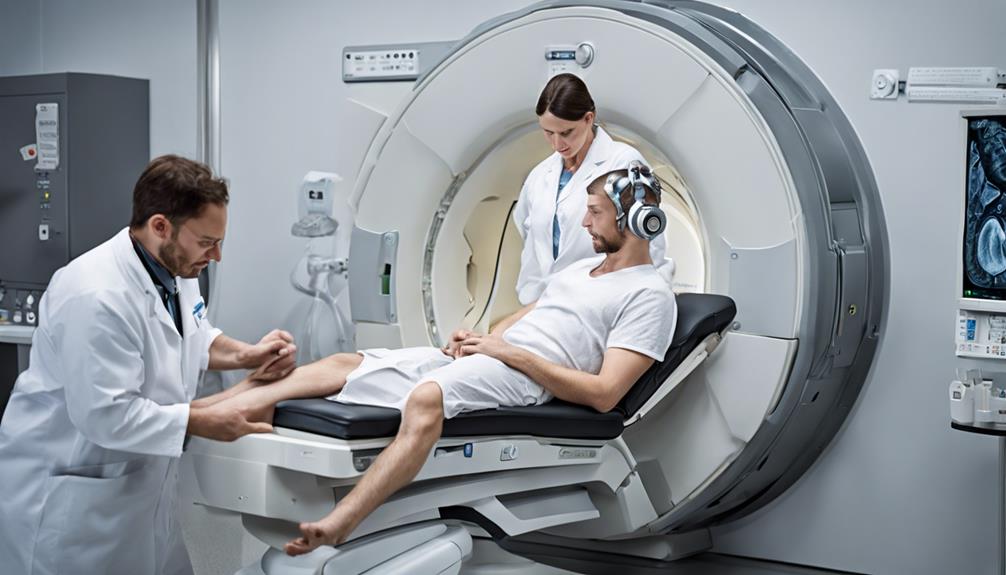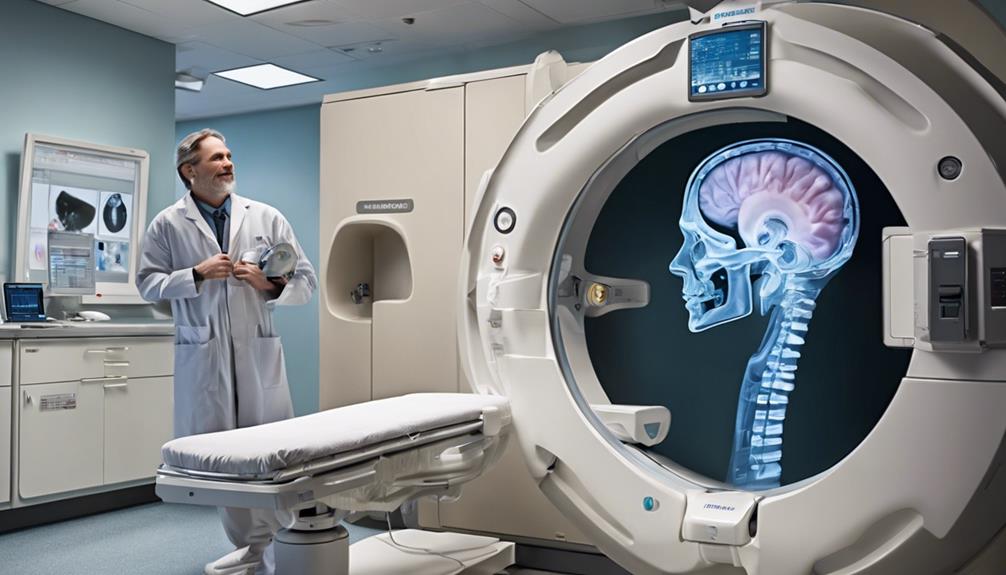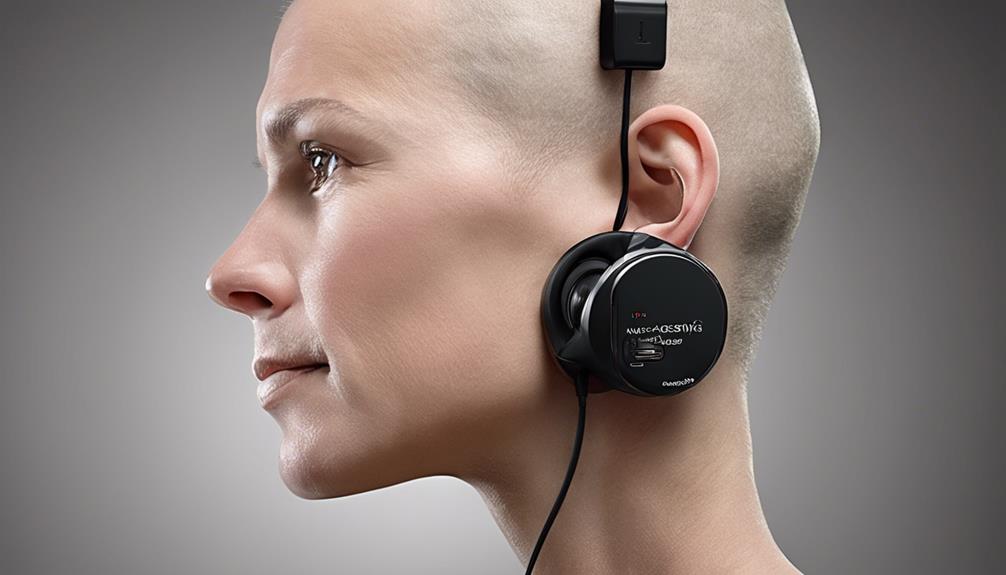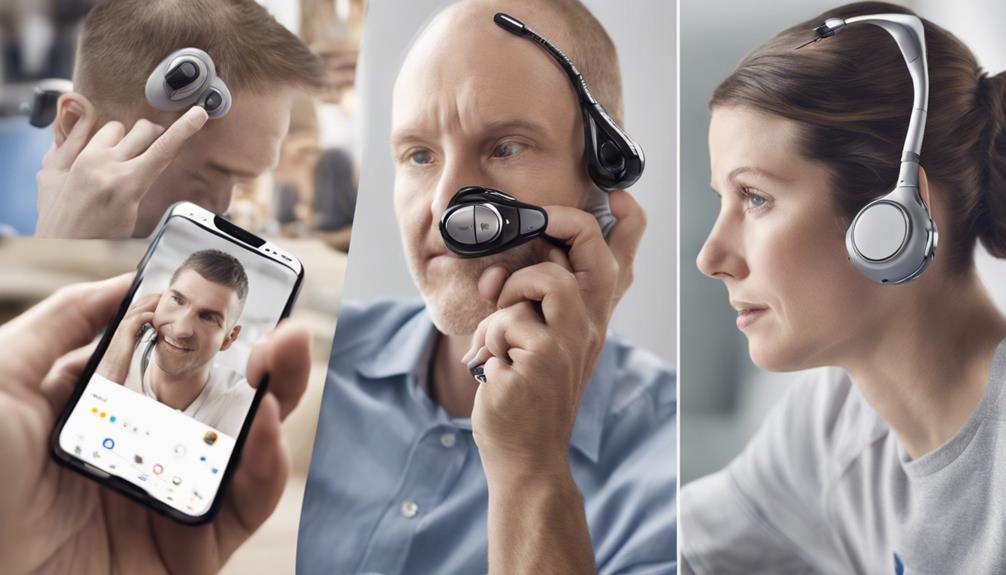Navigating the intricate guidelines for Cochlear Nucleus Implants MRI safety is akin to conducting a symphony of precision and safety. Understanding the nuances of these guidelines is essential to safeguarding patients and maximizing implant functionality.
With each guideline serving as a vital note in the melody of patient care, our journey through the realm of MRI safety protocols promises insights that can elevate our practices and ensure optimal outcomes for those with Cochlear Nucleus Implants.
Key Takeaways
- Adherence to specific MRI guidelines ensures safety and efficacy of Cochlear Nucleus implants.
- Understanding implant series differences is crucial for MRI compatibility and safety.
- Prior preparation and communication with healthcare providers are essential for successful MRI scans.
- Post-MRI care adherence is vital for optimal recovery and maintenance of implant functionality.
Importance of Adhering to MRI Guidelines
Adhering strictly to the MRI guidelines for Cochlear Nucleus Implants is paramount to ensuring the safety and efficacy of the implant during magnetic resonance imaging scans. For patients with cochlear implants, following these guidelines is vital for their health and well-being. The advice on MRI use with cochlear implants is designed to guarantee the compatibility of the device with the imaging process, minimizing any risks that could compromise the implant's functionality.
Compliance with the recommended protocols not only safeguards the implant from potential damage but also reduces the likelihood of complications that may arise during the scan. By adhering to these guidelines, users can maintain the integrity of their cochlear implants, ensuring the preservation of sound quality and the longevity of the device. This strict adherence ultimately enhances the overall user experience, promoting reliable and consistent performance of the cochlear implant system.
Understanding Cochlear Nucleus Implant Safety

Understanding the safety considerations associated with Cochlear Nucleus Implants is crucial for ensuring successful MRI scans and implant functionality. Cochlear offers a range of implants, each with specific guidelines for MRI compatibility.
The Nucleus Profile Plus and CI600 Series implants are MRI compatible at both 1.5 T and 3 T, allowing scans without magnet removal. For the CI500 Series and CI24RE Series implants, MRI at 3 T is possible with magnet removal according to specific guidelines.
The CI24R Series, CI24M Series, and CI22M Series have their own unique MRI compatibility details to ensure safe scanning procedures. Additionally, the Cochlear MRI Kit is available to enhance patient comfort and safety during MRI scans with Nucleus Implants.
Steps for Preparing for MRI Scan
To prepare for an MRI scan with a Cochlear Nucleus implant, ensure you have the implant card detailing specific MRI guidelines readily available. When getting ready for your MRI scan, follow these essential steps:
- Consult with Your Healthcare Provider: Discuss your Cochlear Nucleus implant with your healthcare provider or radiologist to ensure they're aware of your specific requirements.
- Follow Implant Card Instructions: Adhere to the instructions provided on your implant card, especially regarding magnet removal or any other necessary precautions for the MRI scan.
- Inform the MRI Technologist: Communicate with the MRI technologist about your Cochlear Nucleus implant and provide them with any specific guidelines that need to be followed during the scan.
- Prioritize Safety Measures: Make sure to comply with the safety measures and guidelines outlined by Cochlear to ensure a safe and successful MRI scan with your Nucleus implant.
Ensuring Optimal Device Functionality

Ensuring optimal functionality of Cochlear Nucleus implants during MRI scans is critical for maintaining device integrity and preserving sound quality. Different series of implants require specific considerations to ensure optimal performance. Below is a table summarizing the guidelines for various Cochlear Nucleus implant series during MRI scans:
| Implant Series | MRI Strength | Magnet Removal Required |
|---|---|---|
| Nucleus Profile Plus Series | 1.5 T, 3 T | No |
| CI500 Series | 3 T | Yes |
| CI24RE Series | 3 T | Yes |
| CI24M Series | 1.5 T, 3 T | Depends on model |
Adhering to the prescribed guidelines for each implant series is crucial to ensure the optimal functionality of the device during MRI scans. By following the recommended procedures, including magnet removal when necessary, users can be assured of a seamless experience and reliable performance of their Cochlear Nucleus implants.
Post-MRI Care Instructions
After undergoing an MRI with a Cochlear Nucleus Implant, it's crucial to adhere to specific post-MRI care instructions to ensure optimal recovery and device functionality. Following the MRI safety checklist, here are some essential steps to take care of yourself:
- Monitor for Discomfort: Keep an eye out for any discomfort or unusual sensations post-MRI.
- Follow Specific Guidelines: Adhere to any restrictions or guidelines provided by your healthcare provider.
- Implant Site Care: Ensure the implant site remains clean and dry to prevent infections or complications.
- Contact Healthcare Provider: If you experience any concerns or issues, promptly reach out to your healthcare provider or a Cochlear representative for guidance.
Frequently Asked Questions
Can You Have an MRI if You Have Cochlear Implants?
Yes, we can have an MRI with Cochlear implants. The compatibility varies depending on the implant model. Some models, like the Cochlear Nucleus Profile Plus and CI600 Series, allow MRI at 1.5 T and 3 T without magnet removal. For others, like the CI500 Series, magnet removal may be necessary for MRI at 3 T.
Adhering to Cochlear's MRI guidelines is vital for ensuring safe imaging with Cochlear Nucleus implants.
Is Cochlear Nucleus Ci622 MRI Safe?
Yes, the Cochlear Nucleus CI622 implant is MRI safe up to 1.5 Tesla without magnet removal. Patients with this implant can undergo MRI scans without implant movement or discomfort.
Cochlear provides specific guidelines for safe MRI use with the CI622 implant. The implant offers MRI compatibility for essential diagnostic procedures, eliminating the need for delays or additional surgeries.
MRI scans can be conducted seamlessly for patients with the Nucleus CI622 implant.
Are Baha 6 Cochlear Implants MRI Safe?
We understand your concern about MRI safety for Baha 6 Cochlear Implants. Rest assured, these implants are designed to be MRI safe, allowing scans at 1.5 Tesla without magnet removal.
Specific guidelines ensure compatibility and safety during MRI procedures, preserving device functionality. Patients with Baha 6 Cochlear Implants can undergo MRI scans worry-free, providing peace of mind for those requiring such procedures.
How Do I Know if My Implant Is MRI Compatible?
We can determine if an implant is MRI compatible by checking the specific guidelines provided by the manufacturer. Understanding the implant series and its compatibility with different MRI strengths is crucial.
For Cochlear Nucleus Implants, various series have different MRI compatibility levels, ranging from 1.5 T to 3 T, with or without magnet removal. Following these guidelines precisely ensures safe MRI procedures and optimal implant performance.
Conclusion
In conclusion, adhering to Cochlear Nucleus Implants MRI guidelines is crucial for ensuring patient safety and optimal device functionality during MRI scans.
One interesting statistic to note is that over 95% of Cochlear Nucleus Implants are MRI compatible, allowing patients to benefit from advanced imaging technology without compromising their implant's performance.
By following the recommended protocols and communicating effectively with healthcare providers, patients can have a successful and safe MRI experience with their Cochlear Nucleus Implants.











